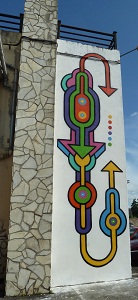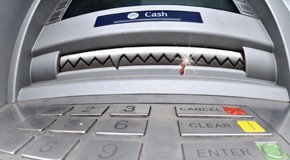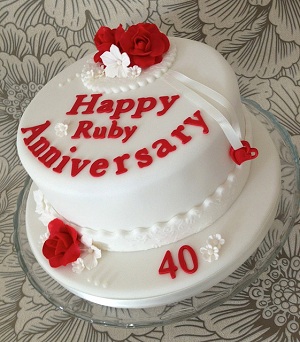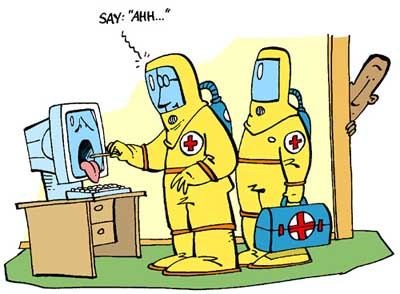 There comes a time in every woman’s life when her friends announce their engagements. The joy she feels about the momentous occasion of the wedding carries her through the mundane details of choosing what to wear and shopping for a gift to wish the newlyweds well. With wedding showers appearing on the horizon, I knew it was time to go back into the fray of shopping at the mall.
There comes a time in every woman’s life when her friends announce their engagements. The joy she feels about the momentous occasion of the wedding carries her through the mundane details of choosing what to wear and shopping for a gift to wish the newlyweds well. With wedding showers appearing on the horizon, I knew it was time to go back into the fray of shopping at the mall.
American custom encourages couples settling down into a life together into a frenzy of spending. Aside from the gorgeous dress, lovely ceremony, and honeymoon in some secluded far away place, couples select the accoutrement needed to establish their joint household. For younger couples who have not had long to establish their own independent living situations, these gift registries can be quite extensive. Even for couples in which the man and woman have been on their own for a while, there’s the temptation to upgrade furnishings or to plan for the grand entertaining they will do together in the future.
Granted, not all of the domestic needs are so thrilling as fine china. A house needs brooms, wastebaskets, and the like to function well, so some kind friend or wedding guest is likely to select these items as practical assistance. While it might not make for a thrilling hunt, for me it has always been an adventure to find the right items, in the right price range, in the right store.
Last night was one such quest. I steeled myself for the arduous task of tracking down registry items and then plunged in. Wielding my trusty laptop, I expertly navigated to the wedding website and found the registry links. Although I only had experience with single-retailer registries, I encountered the innovation of aggregate registry websites in all their glory, allowing couples to gather treasures from far-flung places together into a unified whole. After some contemplation, I decided upon some likely candidates and clicked the links to review the items more closely.
One aspect of registries that makes them so appealing is the automated coordination of purchases. Since so many well-wishers like to provide gifts a couple really need or want, some items are more likely candidates than others. Desired quantities, purchased quantities, and quantities remaining abound, requiring real-time accurate updates. It has been my experience that these quantities are seldom correct and that the updates are slow and unreliable. Therefore, I resolved to pursue a defensive shopping strategy.
First, I found the item of interest on the registry site. Then, I searched for the most convenient location with the item available. Next, since I would rather not venture out after work only to fruitlessly tug on locked doors, I carefully read over the store hours. As it turned out, the online registry location functionality for this particular retailer’s site did not synchronize with their regular location search and the selected store’s open and close times were both listed as “none”. Having recently arrived at a local bookstore only to find that it had closed for good that week, I had no desire to drive around trying to find an open location. Fortunately, the regular store location search was working, revealing the actual hours of operation as well as the handy main phone number.
As I worked my way through the phone tree to an actual human, I was transferred several times incorrectly and ended up needing to redial, which was a small price to pay to avoid driving all over creation to find the gifts. Eventually, the helpful staff member listened to the numeric item identifier as I repeated it over the phone and manually entered it into the system. However, being a savvy saleswoman, she also knew better than to trust the inventory displayed at her terminal and actually pulled the item from the floor for me, holding it at the counter since I was heading right over to purchase it.
Upon arrival, I wound my way through the various displays and discovered the item in the expected department of the store where the saleswoman found me. The transaction went relatively smoothly, aside from the obligatory sales pitch of the retailer’s branded credit card finding no purchase – though they did sneak me onto their mailing list by offering to email me a receipt. I was all set to head on to the next location when I realized my error: while I had remembered to ask for a gift receipt – granted only after the transaction was tendered – I had entirely forgotten to mention the registry! She directed me to the wedding consultants and the heart of the store.
I tentatively crept past the immaculate displays of place settings I couldn’t afford and that would never be practical with small children in the household until I found the wedding registry consultant with the power to correct my mistake. She was an older woman with neat fingernails, adequate computer skills, and familiarity with my problem. She started the registry software whose interface looked like it had been designed in the early ’90s and struggled to recall the process. She pulled out a notebook scrawled with her somewhat indecipherable handwriting and flipped through trying to find her tips & tricks for this particular task. She resorted to pulling out a large binder that was a mashup of store policies and user manual and found the page of instructions.
Not wanting to rush her but slightly impatient to venture on to the next mall for additional purchases, I read the instructions upside-down from across the desk. They were relatively straightforward but clearly not routine for this user. She looked up the bride’s name, found the registry, and eventually unearthed the screen that allowed altering the quantities for desired, purchased, and received and edited them directly. Before sending me on my merry way, she caught her own deviation from process and navigated to a different window where she again scrolled through a dense grid of product data before finding the item I purchased. She entered my name as the purchaser and the price I paid before attempting to save. An error message popped up and I could tell that this was not meant for human consumption, referring to some internal error code. When she tried again, a different error occurred, resulting in application crash. She fell back to hardcopy, scrawling the details for a later second attempt.
Having thus far survived my shopping ordeal, I doggedly drove to the next mall and planned my rapid strike and escape. This store wasn’t in the mall proper, removing some of the harrowing details or the earlier endeavour. Inside, I wandered until I found the item and then stood dutifully in line until a helpful saleswoman heard me mention the registry. I was pulled out of line to visit a separate kiosk that did not recognize the bride’s name or the groom’s name. After some reflection, the saleswoman mentioned that aggregate registries did not interface with individual retailer registry systems, preventing me from automatically reporting this sale. I forked over the money and toted my prizes back to the car, knowing that I was not yet finished, with the troubleshooting of reporting the bricks & mortar sale to the online aggregate registry system remaining ahead of me.
Still, upon reflection, discovering a bug in the online system and crashing a desktop application without even touching it is all in a day’s work for a software tester, so I can wrap my hard won gifts, don my party frock, and go off to celebrate the wedding with the satisfaction of a job well done.
Image source



 There comes a time in every woman’s life when her friends announce their engagements. The joy she feels about the momentous occasion of the wedding carries her through the mundane details of choosing what to wear and shopping for a gift to wish the newlyweds well. With wedding showers appearing on the horizon, I knew it was time to go back into the fray of shopping at the mall.
There comes a time in every woman’s life when her friends announce their engagements. The joy she feels about the momentous occasion of the wedding carries her through the mundane details of choosing what to wear and shopping for a gift to wish the newlyweds well. With wedding showers appearing on the horizon, I knew it was time to go back into the fray of shopping at the mall.



